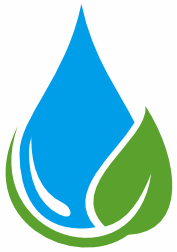
At present, challenges abound around wastewater management in the urban environment under the context of drying climate and growing population. One of the heated topics is on wastewater reuse, i.e. a closed water cycle loop has not been fully developed. The formation of a closed water cycle loop in an urban environment can save the costs of water delivery to end users, operation, maintenance and ease the monitoring process systematically. Figure 1 shows three different scenarios on water usage. In mode c, not only a closed loop is established, but also wastewater is further exploited for irrigation and cooling.

By encouraging the direct use of treated wastewater, the cost for treatment of natural water can be exempted (see Table 1) while reducing the abstraction of limited groundwater, as well as reducing risks of being exposed to unknown pathogens in the natural water body.

At this stage, endeavors have been made on aquifer recharge from wastewater, but no attempt has been made on the reuse of potable water directly from wastewater despite the quality of treated wastewater after tertiary treatment process is, in most cases, better than natural water from the environment (illustrated in Figure 2).


The main problem is the strong opposition from the public as treated wastewater is still regarded as ‘inferior’ than natural water and the thought of ‘drinking defecation or waste’ is distasteful. Education on water literacy plays a significant role in pushing this scheme forward but it could take decades to achieve the goal.
Figure 4 demonstrates the wastewater treatment processes applied in Windhoek for direct potable water use in which a multiple-barrier system was adopted. Surprisingly, the public in Windhoek are incredibly proud of the system in that it leads the world in the direct use of wastewater for drinking purposes.

Finally we’ll leave you with this diagram and a decision,
Which side do you want to live on?

#wastewaterthinking
Reference
Jones, O.A., Green, P.G., Voulvoulis, N. 2007. Questioning the excessive use of advanced treatment to remove organic micropollutants from wastewater, Environ Sci Technol, 41, 5085-5089.
